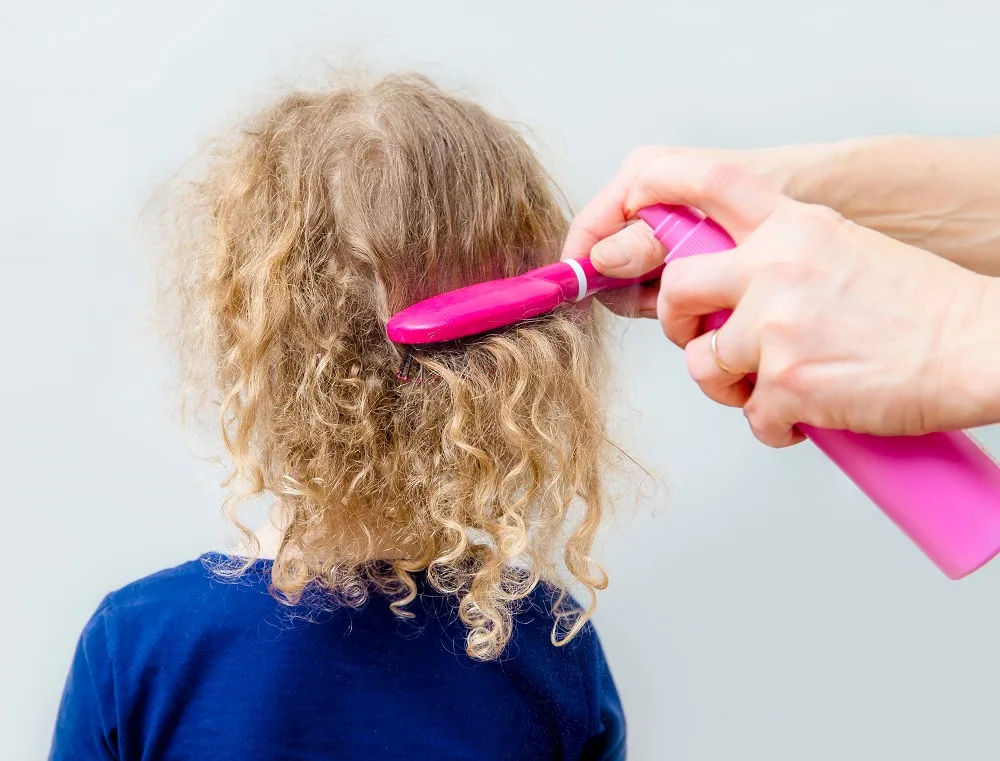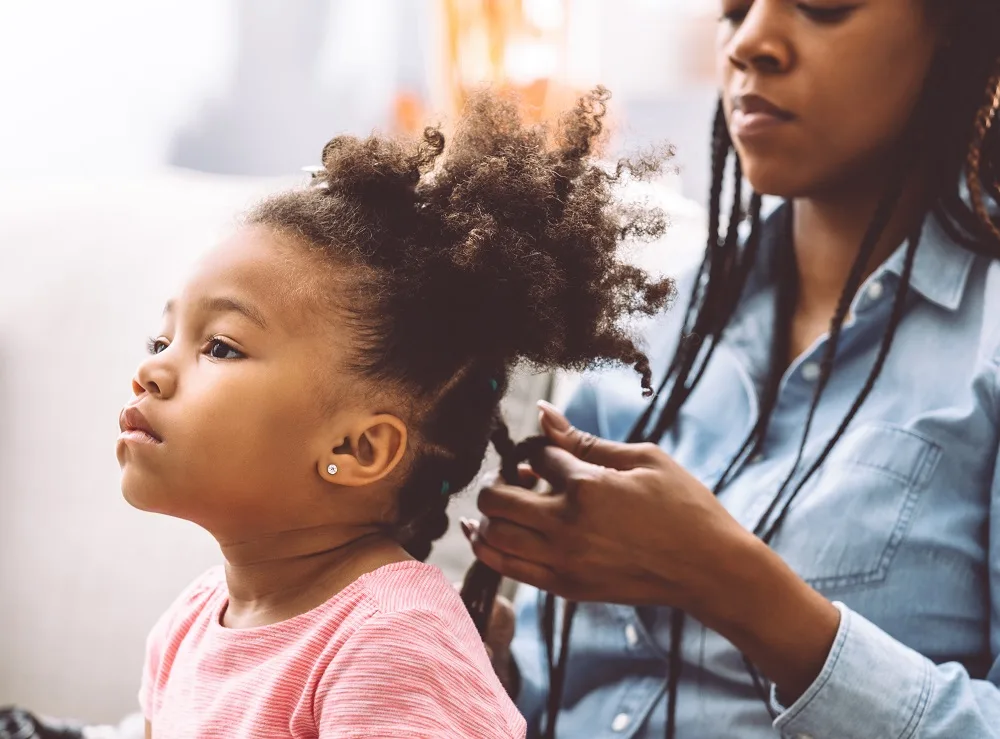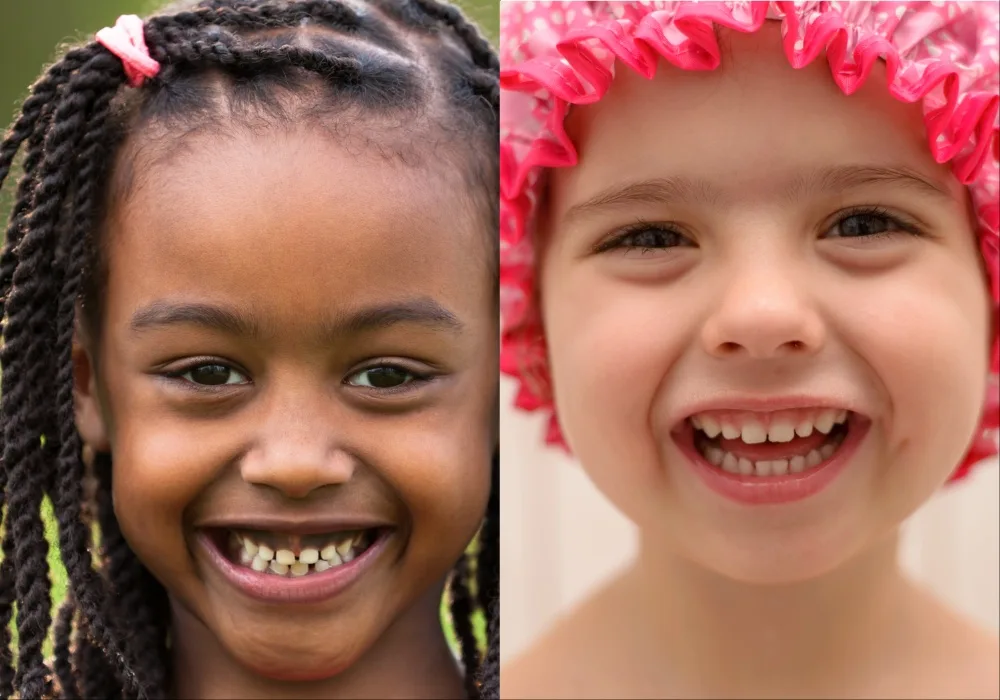As we know, hair comes in all textures from straight to kinky and everything in between. If your kid has “textured hair” or curly hair, you know that it can be a struggle to manage. But with the proper care, your child can rock their natural texture!
I cannot stress enough how important it is to care for your child’s textured hair. The care you put into their hair can affect their confidence, not only in this stage of their life, but into adulthood.
They should know that their natural curls are beautiful and manageable, and they will only learn this if you teach them.
By putting in a little extra effort and care into their haircare routine, you can make a big difference in your child’s life. They may not appreciate it now, but they will thank you in the future!
How to Manage Kid’s Textured Hair
I’ll discuss the 6 main elements of managing and taking care of your kid’s textured hair: Shampooing, Moisturizing, Detangling, Trimming, Styling, and Protecting.
Of course, within the classification of “textured” hair, there are many variations, so this article will discuss different suggestions for a variety of textures.
Shampooing

Shampooing your kid’s hair thoroughly may present a bit of a challenge, but it is an important step in caring for their curls.
Why is this important?
Shampooing your kid’s textured hair properly is the basis for healthy hair and scalp. It removes buildup from product, dirt, and other substances and also prepares the hair and scalp to absorb moisture from the conditioner.
Tips for Shampooing:
- Completely saturate the hair and scalp with warm water before applying shampoo.
- If you can, try only to shampoo every other day to avoid stripping the hair of natural oils. If your child’s hair is disheveled or in need of a rinse in between shampoos, simply rinse it with a little conditioner.
- To completely clean the hair, it’s recommended that you shampoo at least twice. The first shampoo will help break down or remove buildup, and the second will fully clean the hair. You want to build a good lather. Sometimes, this can take even more than two times to achieve.
- Make sure to massage your kid’s scalp with the shampoo so that you are cleaning not only their hair, but their scalp as well.
- If your child’s textured hair is extremely thick, you will need to put special attention into cleaning their scalp. You want to ensure that the shampoo reaches their scalp and that you are really cleaning the scalp along with the hair. This is very important because if you are not properly cleaning your child’s scalp, they can develop buildup, matting, and skin irritations.
Moisturizing

Curly hair textures tend to need more moisture than straight hair, especially if you live in a dryer climate. Moisturizing your kid’s textured hair is another important step in caring for their curls.
Why is this important?
Neglecting to properly moisturize curly hair can create frizz and make it even more difficult to detangle. Over time, a lack of moisture can damage the hair and make it unmanageable. It is therefore an essential part of any curly hair routine!
Tips for Moisturizing:
- Always condition curly hair after shampooing, even if the shampoo has moisturizing properties.
- Let the conditioner sit in your kid’s hair for a few minutes if possible. They can enjoy playing in the bath while their conditioner is soaking in!
- If your child has thinner or looser curls that get weighed down easily, try using a lightweight conditioner and applying it to the middle and ends of the hair, rather than directly on the scalp.
- If your child has thick, coarse, or tight curls, you may need to condition the hair section by section and comb the conditioner through the hair with a wide toothed comb. I also recommend that you let the conditioner soak into their hair for at least 10 minutes if possible.
- Rinse out the conditioner with fresh water (not used bath water). You can also use cooler water, as this will help seal the conditioner into the hair.
- Apply a leave-in conditioner after you have gently towel-dried your child’s hair. If your kid has softer or thinner curls, a light leave-in conditioner or a moisturizing curl cream will do the trick. If your child has coarser or tighter curls, you can apply a heavier leave-in conditioner to each section of their hair.
Detangling

The very word “detangling” may send shivers down your spine if you have a curly-headed kid. We all know that trying to detangle any kid’s hair is a battle, but this is especially true when your child has textured hair. Here are a few tips to make it easier. But first, why is it so important to detangle regularly?
Why is this important?
It could be said that detangling your child’s textured hair is the most important part of caring for their curls. If tangles are left in the hair, over time the hair will begin to matt, and it will be extremely difficult to remove the matting. Teaching your kid how to detangle their hair will help them immensely in the present and in the future.
Tips for Detangling:
- Detangle with a wide-toothed comb or a detangling brush. You may need to experiment to see which one works better for your child’s hair.
- No matter the specific texture of your kid’s hair, it is important to start detangling from the ends of their hair and working up to the roots. This will allow you to hold the hair as you detangle the ends, thereby causing less discomfort.
- If your kid has looser curls or fine/smoother hair, you may be able to detangle their hair while the conditioner is still in it. Let the conditioner soak into the hair for a few minutes and then detangle.
- If your child’s hair tends to shrink and matt up when shampooed, it is essential to detangle before shampooing. This is usually the case for tightly curled hair that is coarser. In that case, detangle the hair section by section before shampooing. You will need to spritz each section with a bit of water and add conditioner or a detangler. Then brush or comb from the ends up to the roots. You will still need to condition the hair again after shampooing.
- Start brushing or combing your child’s hair from infancy so that they can become accustomed to the feeling. This can make detangling a bit less chaotic when their hair begins to grow longer and thicker.
- Be as gentle as possible, but don’t skip corners. Detangling your kid’s textured hair can be painful for them (and for you) if they have a sensitive scalp, so try to be as gentle as possible, taking it section by section. That being said, it is important for you to fully detangle their hair, even if it takes multiple 5 minute sessions of hair combing.
Trimming

Trimming your kid’s textured hair may not be the first thing that comes to mind, especially if you want to grow out their beautiful locks, but it is an essential part of caring for their curls.
Why is this important?
Trimming your child’s curly hair is important for its health, growth, and appearance. If your kid’s hair has too many split ends, it will become extremely difficult to detangle, moisturize, and style.
Split ends can be prevented to a certain degree, but they cannot be prevented entirely, and once a strand of hair has split, you can not repair it.
Contrary to what some may say, it is impossible to repair split ends with serums or moisturizers. They simply have to be cut off so that the hair doesn’t continue to split.
Tips for Trimming:
- It is best to contact a stylist experienced in kids’ hair to schedule a trim for your child, but if this isn’t possible, it can be done at home.
- When the ends of your kid’s hair become extra fuzzy/rough/thin, or you are having an extremely difficult time detangling the ends, even when the rest of the hair is detangled, it is time for a trim.
- If you are trimming your child’s hair at home, it is best to do so after it has been detangled, shampooed, and conditioned. You can cut the hair dry or wet, but for tighter curls or coarser hair, I would recommend trimming it while it is wet/damp.
- Make sure to trim the hair section by section.
- It is important to trim the hair ABOVE the line of split ends. If you don’t completely remove the split end, it will continue to split. Therefore, trimming only a portion of the split ends will not benefit the hair.
Styling

After your child’s hair is trimmed, shampooed, conditioned, and detangled, it is time for some styling! But don’t worry, styling doesn’t have to be complicated. It can be as simple or detailed as you would like.
Why is this important?
It is no secret that we all feel our best when our hair is styled. Your kid will look and feel their best if their hair is properly styled. Also, styling the hair can help to prevent excessive tangling, which will make everything much easier when it comes time for wash day.
Tips for Styling:
- The key to a good style is making sure that the hair is moisturized first. Any curly hairstyle will look better if it is healthy and moisturized.
- To style your kid’s hair so that it hangs naturally, apply a curl cream and/or gel after adding a leave-in moisturizer. You can comb it through the hair with your fingers or with a comb.
- When combing in the product, it is best to comb away from the scalp, so that the curls aren’t stuck down to the scalp. Combing away from the scalp will create voluminous, bouncy curls.
- If you are creating an updo or a braided style, do not style the hair when it is completely wet. As the hair dries, it will shrink, and if the hair is pulled tightly into an updo or braids, this could cause discomfort and hair breakage. Wait for the hair to dry partially or completely before attempting this kind of style.
- If you will be using heat to straighten the hair, make sure to use a heat protectant. Heat protectants can come in the form of a cream or spray.
- Seal in moisture with a light oil after the hair has fully dried. This will ensure that your kid’s textured hair stays moisturized and shiny.
- Have fun! Make sure to ask your kid what styles they want to try so that they can be excited to get their hair styled.
Protecting

Protecting your kid’s textured hair could be described as “aftercare” or “maintenance.” This step of caring for your child’s curls is an important part of their hair care routine.
Why is this important?
Protecting your kid’s hair in between washing or styling will make everyone’s life a bit easier. Just like anything else in life, small, concerted efforts will make a big difference. Protecting curly hair can make a huge difference in the amount of time needed to detangle it, or even cut down on the frequency of trims.
Tips for Protecting:
- If your kid has tight curls and coarse hair, you can opt for a protective style to cut down on styling and detangling. Protective styles can include braids or twists.
- If you opt for a protective style, make sure it is done in a way that won’t be damaging to the hair or scalp. If braids are too tight, they can cause hair loss and damage. If you are taking your child to a professional stylist to get their protective style, make sure that the stylist has a good reputation for maintaining the health of their clients’ hair and scalp.
- Whether your child has a protective style or not, it is important to protect their hair during the night while they are sleeping. This can be done with a satin/silk bonnet or, if it is difficult for them to keep it on during the night, they can use a satin/silk pillowcase. This will create less friction for the hair, thereby helping minimize frizz and damage.
- If your child swims in chlorinated pools, it is important to protect their hair from the damaging effects of chlorine. Of course, the best solution is to wear a swim cap, but if this is impractical, you can soak the hair with tap water before they enter the pool. Because their hair has already absorbed the less-chlorinated tap water, it will absorb less of the highly-chlorinated pool water. Make sure to thoroughly shampoo and condition their hair afterward.
- Applying a light hair oil to your kid’s hair after styling can seal in moisture and serve as a protective barrier.
Summary
Even though textured/curly hair takes a bit more care, any effort you make is well worth it. By taking good care of your kid’s curls, you are boosting their confidence now, and equipping them with the tools and attitude they need to care for their own hair when the time comes. You can be sure that they will thank you for all the effort you put into their hair!
Key Things to Know
- Shampooing your kid’s hair thoroughly will keep their scalp healthy and ensure that their hair can absorb the moisture from their conditioner.
- Conditioning your child’s curls is essential for minimizing frizz and damage. Make sure to condition after shampooing, and apply a leave-in conditioner before styling.
- Trimming is essential to keep your kid’s hair healthy. When the ends of their hair become unusually difficult to detangle, or become rough or fuzzy, it’s time for a trim.
- If your kid’s curls are soft, fine, or loose, it may be better to detangle after it is shampooed while the conditioner is still in the hair.
- If your kid’s curls are coarse and tight, you may need to detangle section by section before shampooing.
- Protect your child’s hair while sleeping with a satin/silk hair bonnet or a satin/silk pillowcase.
- Try to minimize exposure to chlorine by having your kid wear a swim cap or by saturating their hair with tap water before entering the pool.
